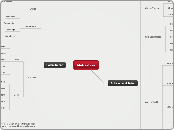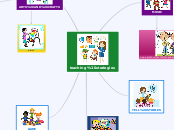Motivation
Commitment
Promote Flexibility and Resiliency
Resiliency
Refusal to allow anything to prevent you from reaching goals
Anchoring of posture and attitude within acceptable limits
Flexibility
Lets you respond to what you encounter instead of remaining committed
Capacity to adapt your posture and attitude
Fear of Rejection
Overcoming fear of rejection
Relieve the mind
Accept limitations
Identify Motivator
Identify the origin of fear
Fear of change
Fear of Financial disaster
Fear of being disliked
Fear of humiliation
Fear of success
Fear of failure
Fear of Commitment
Fear of repeating mistakes
Don't want to fix something that one feel isn't broken
Fear of limitations
Equate commitment with boredom
Fear of forsaking sexual freedoms
Fear of becoming trapped
Worry that supporting will bind the percieved with its outcome
Fear of relinquishing freedom
Fear of being embarrassed by somethins failure
The Tipping Point- Moment when an idea,trend,or social behavior crosses a certain threshold before catching on
The power of context
The Stickiness factor
The Law of the few
Progress
Cons
Loss of loyalty
Resentment
Loss of enthusiasm
Helplessness
Frustration
Pros
Excitement from being involved
Value and significance
Control over operations
Impending success
Developed and adherded to an effective timeline
Competence
Standards
Challenge
Recognition
Choice
Meaningfulness
Offer the final look
Ensure task relevance
Provide an exciting vision
Clearly convey passions
Establish a non-cynical climate
Self-Direction
Feedback
Screening process
Choose activities & behaviors that'll help accomplish goals
Committing to a meaningful purpose
Setting your behavior on a particular course
Motivational Approaches in the Workplace
Intrinsic Rewards
Are gained immediately
Engage our emotions
Sense of Purpose
Pride in work
Extrinsic Rewards
Time off work
Money
Commitment & Compliance
Obtaining commitment from another person
Must feel views are heard and appreciated
Permitted to offer input
Outcome must be beneficial
Commitment-Do things because we want to
When Compliance is appropriate
When making an informed descision conply
When no viable alternative solutions
When no time for discussion
Compliance-Do things because we have to
Achievement Drive
Total Behavior = All Behavior- Which is chosen
Physiology
Feeling
Thinking
When 1 total behavior is changed, the other 3 are modified
Acting
The Comparing Place
Frustation Signal
Behavior needs to be adjusted to calm down
Real & Perceptual world don't match up
Part of the brain where we continually process information
Quality World
Percieved World
Often inaccurate
Subject to continuous change
Unique
Subjective, based on an individual's culture,education,gender,etc
Valuing filter
Neutral-neither helps nor hinders our needs
Negative value-hinderance to our needs
Positive value-satisfies our needs
Total knowledge filter
Identify information as significant and filter further
May be significant, seek more information
Determine that information isn't significant and perception terminated
Real World
Things we've previously experienced
Everything we know
Five Basic Needs
Fun
Freedom
Power
Love and belonging
Survival
Choice Theory
Driven by our biology to satisfy 5 basic needs
Almost all behavior is chosen
All we do is behave
Classical Conditioning
Conditioned Relationship
Conditioned Response
Conditioning Stimulus
Unconditioned Relationship
Unconditioned Response
Unconditioned Stimulus









